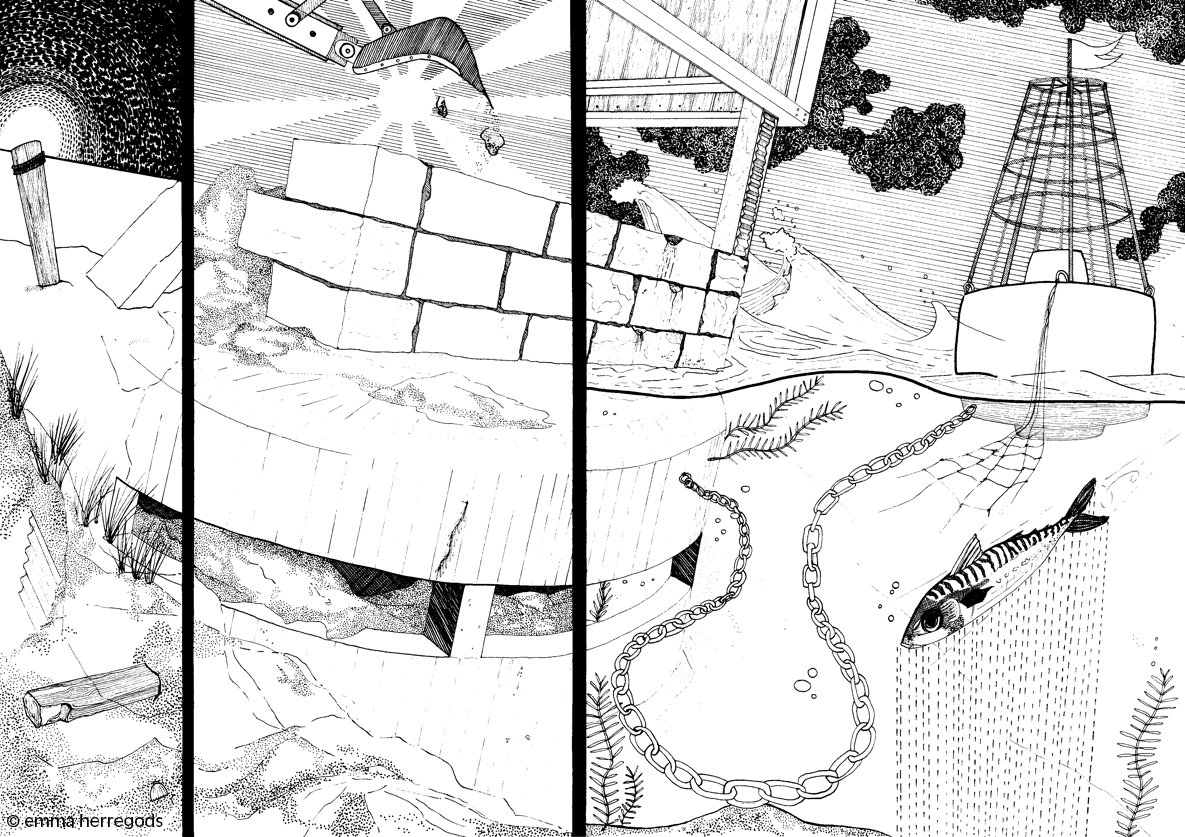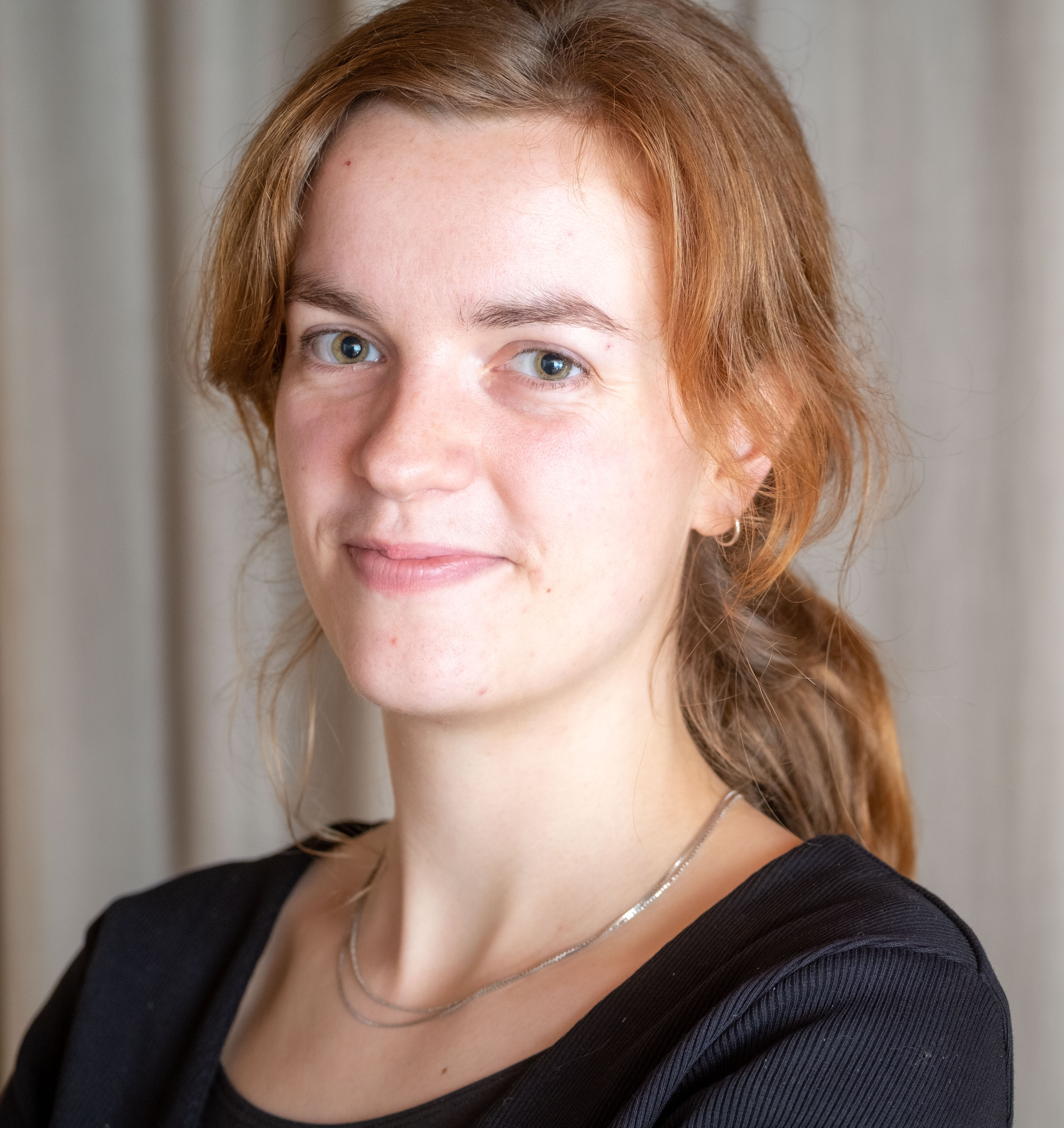As an intermediary space and a common product between human beings and other earthly powers, the coastline is an infrastructure hallmarked by its state of ongoing crisis. From the commotion on this border, the Earth’s architecture is emerging from the ceaseless embrace between land, living beings, and the sea.” (Trévelo et al., 2021)
Sea:
Here where we are, in the middle, used to be Tes terep. During the Middle Ages, this marsh-like peninsula was separated from the mainland by a large E-W oriented tidal gully. Dunes moved around me. My tides shaped the landscape. In the 13th century, a fishing settlement was establis hed on the peninsula, close to a local tidal gully. My Drainage works lowered the land, and as a result large parts of Testerep were flooded after fierce winter storms in the following centuries, also partly destroying the settlement. The village was definitely abandoned in the 15th century and relocated behind the new dike. In the face of my ceaseless and uncontrollable moods, living beings have no choice but to organize their worlds.
DIGGER
Sea:
Digger is always around. She and the dyke seem to form a unity, constantly reinforcing the dike and making it higher and higher. I think the roug hness of my borders and the whirls of my waves are triggers to control me. Where I embrace the land, the coastline is a concrete wall now. As if they, in the end, could win the battle.
Sea:
You look so diligent, Digger.
Digger:
[vrrzzrrvrrr]
I see no single cloud but I feel it, millennial flood is coming; I feel like I should do something.
Sea:
Will you choose my side? I long for more room to play.
[SOUND OF THE FLOOD]
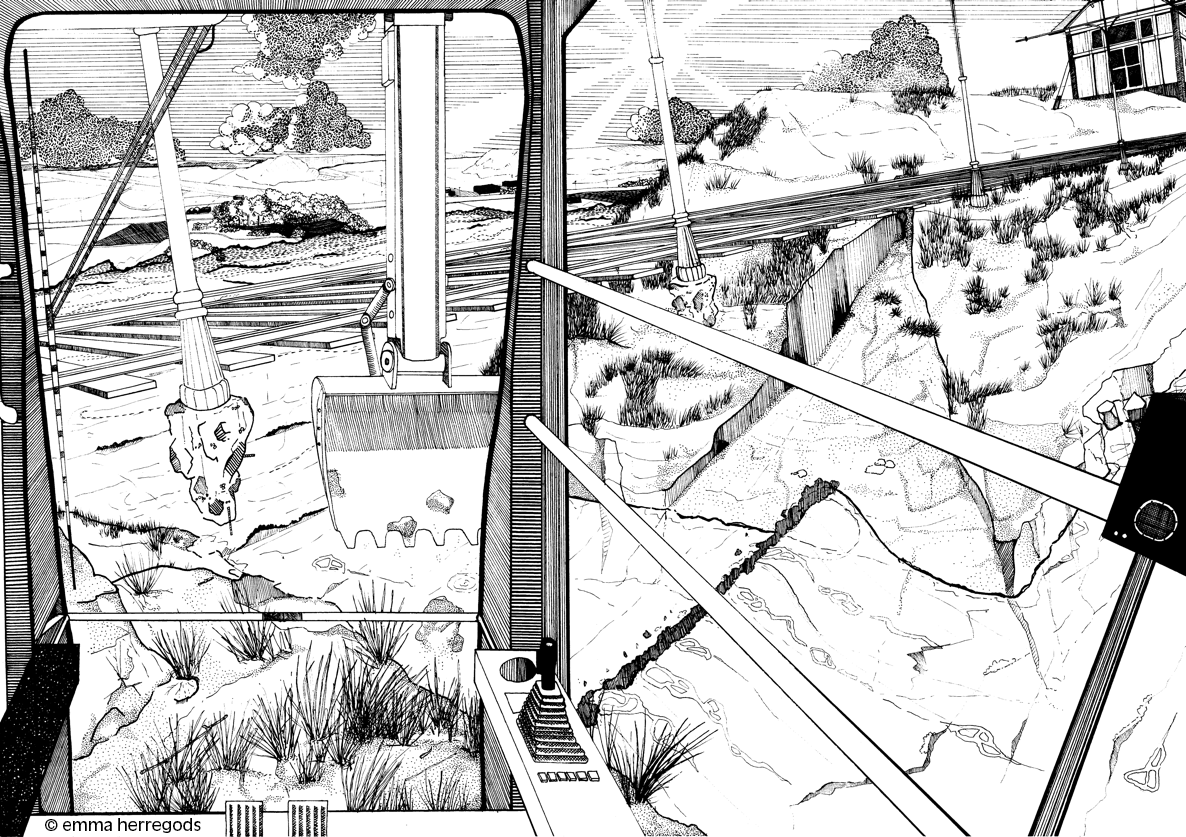
***
TRAM
Sea:
Tram has been crossing this land for quite some time now. She was in fact a catalyst for the development of many settlements here at my coast who later became villages and towns. And who are now connected like one urban knitting along the coast. But here, in the middle, it seems as if this wall of buildings has been broken through, as if the land is showing me a window of opportunity.
Tram:
Tramstop feels like coming home to me.
Sea:
Seeing you here again and again makes time real for me.
Sea:
Digger behaves oddly.
Tram:
...and you, Sea, you seem restless.
[SOUND OF THE FLOOD]
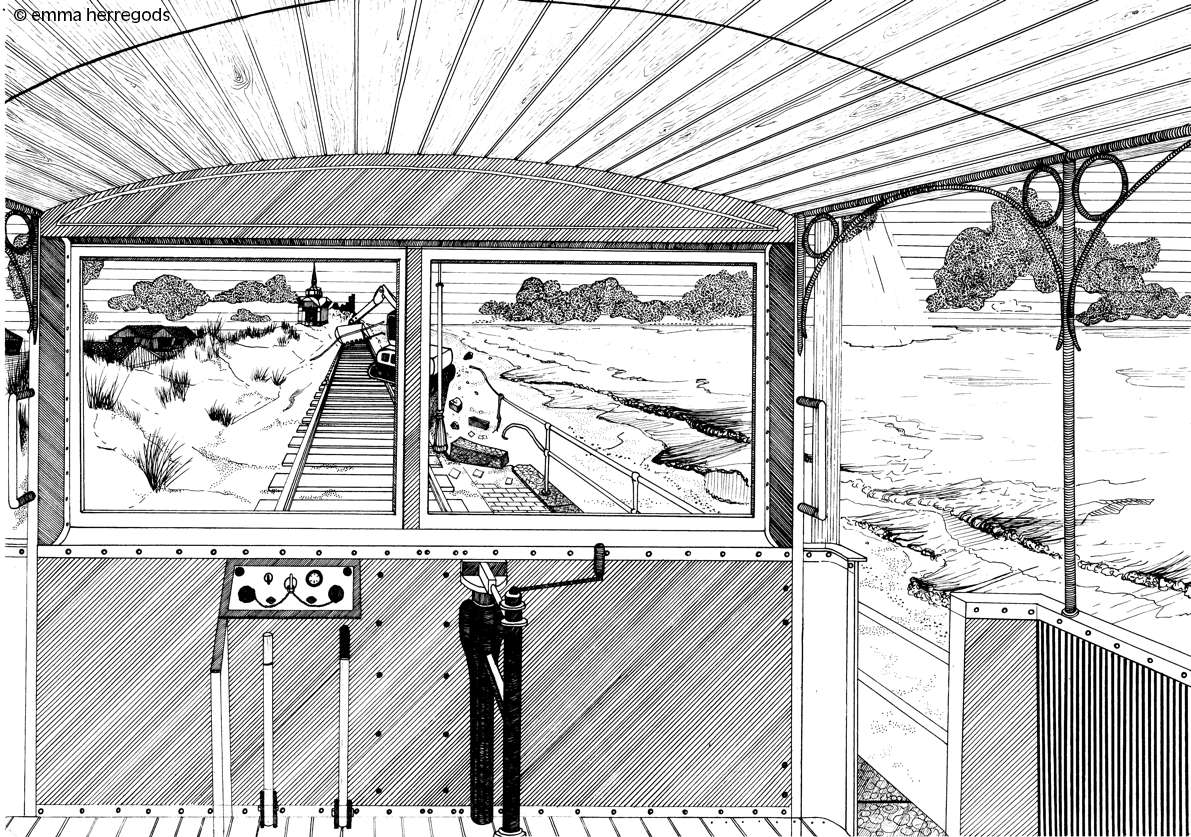
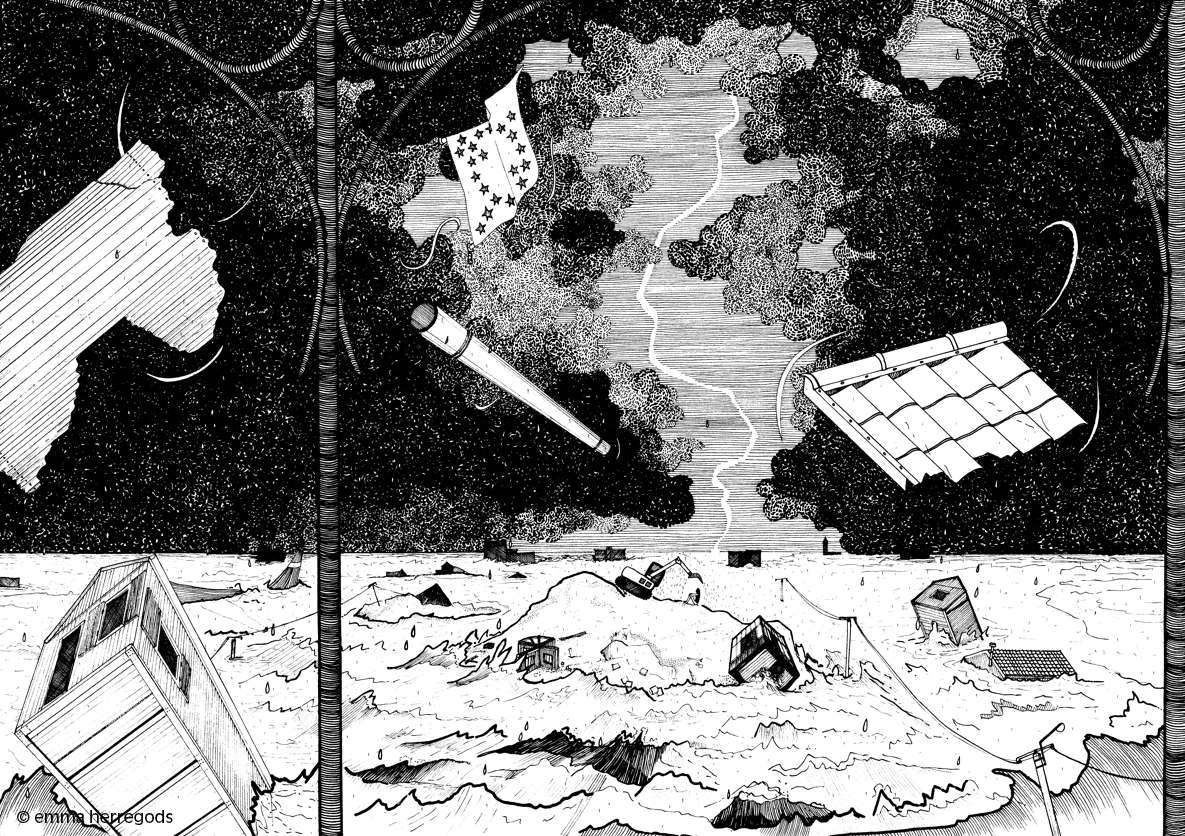
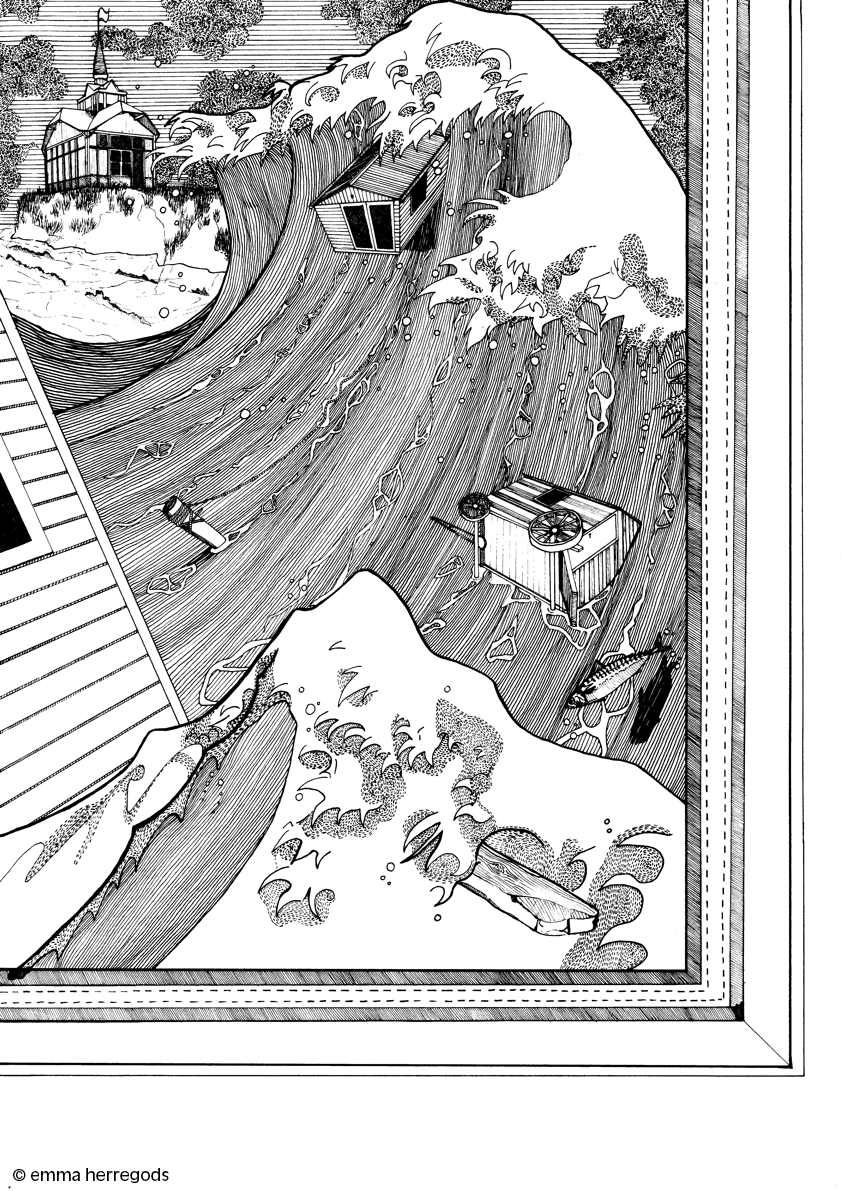
GIRL
[SOUND OF THE FLOOD]
***
Sea:
It is cold and the holiday park behind the dike is silent. Only one figure moves behind a window. This human being apparently wishes to stay and does not look prepared like I am. Girl: Is there still someone else here?
Digger:
[vuuzzzrrrrrv]
Tram:
Girl, I just see another storm coming.
Girl:
Where will we sleep?
Or take showers?
What about cooking?
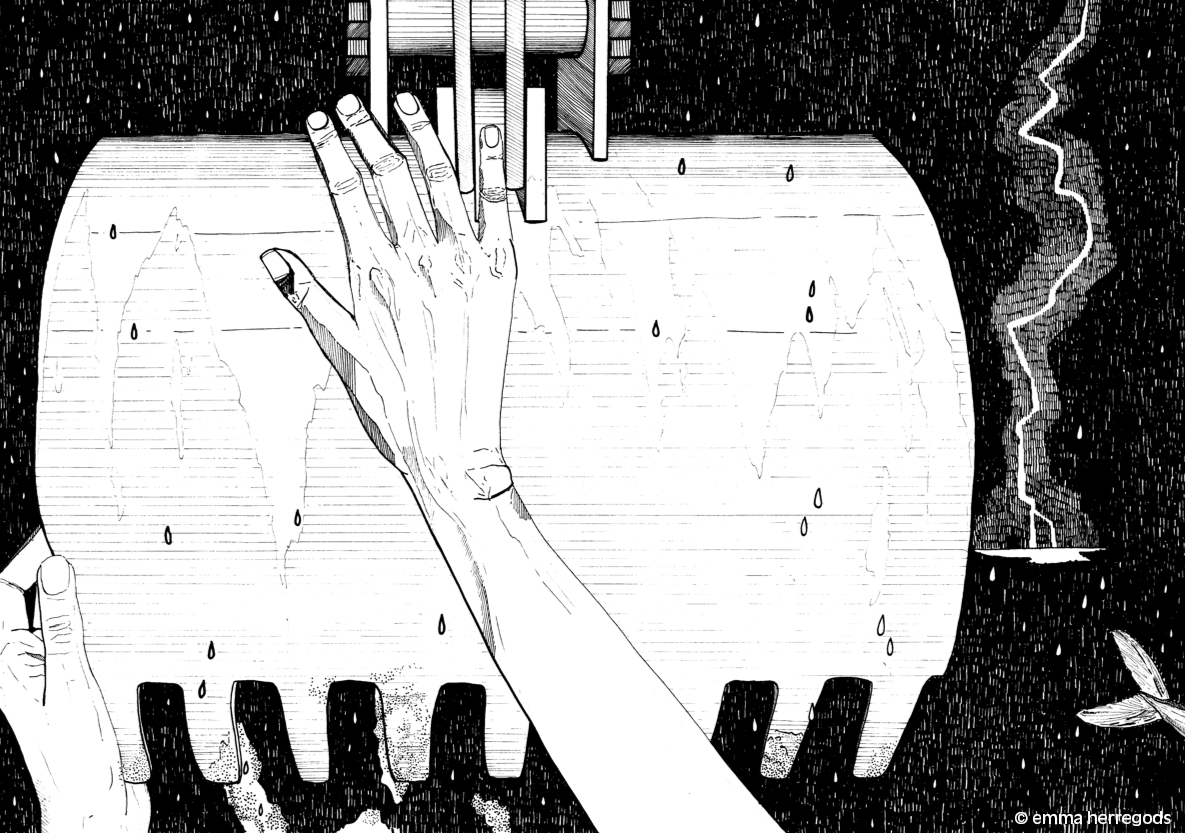
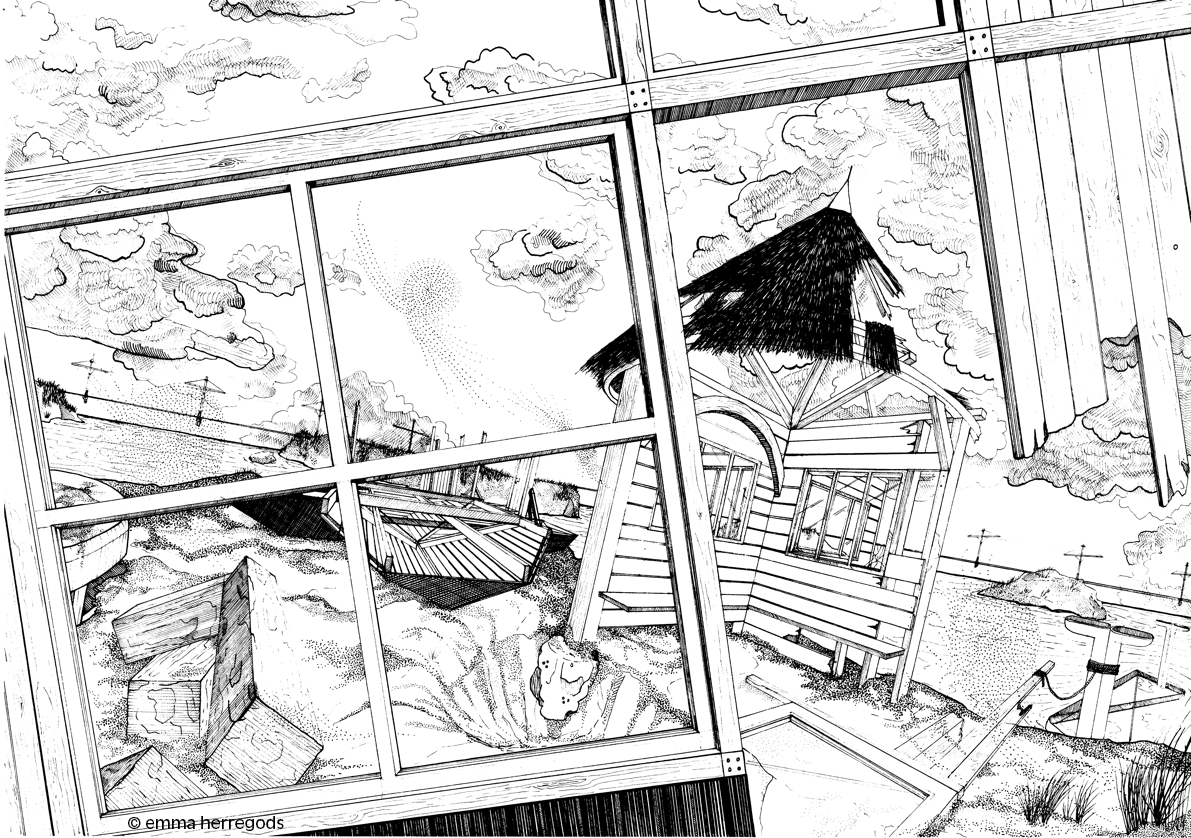
Architecture comes to life, vibrates, breathes and transpires, absorbs and disgorges, becomes calcified and oxidized. Its structures become overgrown with moss and all sorts of organic matter, germinate and flower, and get colonized. It also trembles, burns, corrodes and erodes, collapses, becomes flooded, silted up with sand and mud, breaks up, scatters, and is erased.” (Trévelo et al., 2021)
Sea:
Hey, there is Testerep once again. The Earth is nota fixed and natural décor, but a body being continually formed and transformed by the actions and reactions of all those who, be they living or non-living, bring life to it.
Girl:
We will bend to the conditions, we won’t break.
Tram:
What will the two of you do when I come over again?
Digger:
We will welcome you and build a shelter with the beached fragments of the storm, here on the new Island Testerep.
Girl:
And we will roll up our trousers so that only our toes get wet.
